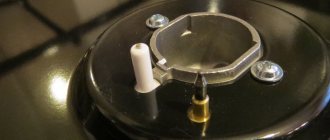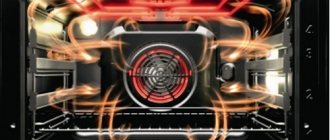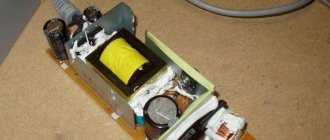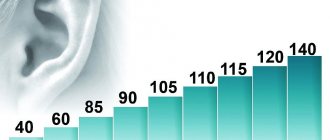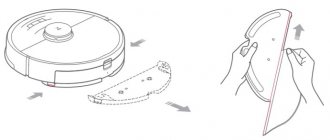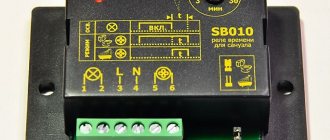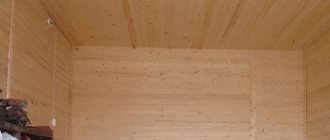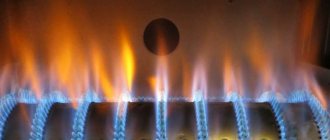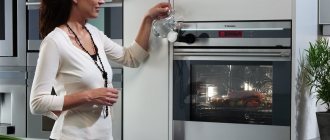When making renovations in the kitchen, the question very often arises: how exactly to connect the hob and oven so that it is safe and does not require a lot of effort and money? Manufacturers and sellers of electrical appliances always recommend entrusting the connection to professionals, but most often this service is expensive or is an additional option imposed by the seller on the buyer.
As practice shows, the issue of connecting an oven and hob can be solved independently even by a person who has never been involved with electrics, but who has a desire to figure it out and at least a minimum set of tools.
Next, we will look into this difficult matter: how to connect the hob and oven?
Task
First, let's understand the problem we will solve in this article. It so happened that in the kitchen there is one electrical cable to power the electric stove. And this happened not necessarily due to the mistake of the builders, who brought out one cable for the electric stove.
All kitchens in standard apartment buildings are designed to install a stationary electric stove for which there is no need to separate the power supply for the hob and oven.
Hence the quite common problem of how to connect a separate oven and hob to one power cable.
Rules for preparing a furniture niche
After the installation location and method have been selected, it is necessary to provide:
- Protection against voltage surges in the general electrical network;
- Grounding;
- Ventilation – the oven needs to be built in at a distance of 50 mm from the back wall of the niche, 9-10 cm from the bottom, and the gaps on the sides should be approximately 5 cm.
Plan your purchases
Let's think about how a reasonable person would buy an oven and panel.
Option 1. There is wiring, no household appliances
The kitchen has electrical wiring, new or old, it doesn’t matter. There is one terminal for an electric stove, the cable of which has very specific core cross-sections and material.
If you do not know the cross-section of the cable, then turn off the power supply to the cable and, having removed 10 mm of insulation from one of the cores, you need to use a caliper to measure the diameter of the core and use the formula: S=π×d²÷4 (pi D square divided by 4) calculate the cross-section cable cores.
- If everything is not completely bad for you, then the cross-section of the cores will be 4 or 6 mm2.
- If the house is not older than 2001, then the conductors will be copper;
- If the house is old, then the conductors will be aluminum.
This data is quite enough to calculate the total maximum power of the panel and oven that you need to buy.
Varieties
At the moment they are distinguished.
- Type:
- dependent;
- independent.
2. By heating or heating method:
- gas;
- electric.
The first option has a switch. You can turn on the equipment with just one button. Operation is only possible in conjunction with a hob, that is, paired with a stove. Regarding the independent type, it works in autonomous mode and is equipped with a separate control panel, which provides for each actively used function of the oven.
As for gas ovens, they are more suitable for those people who are accustomed to standard cooking devices. Regarding the connection, it should be noted that connecting an oven without a plug to work is quite difficult; it is best to entrust this process to specialists. This type of equipment is equipped with burner nozzles, which are located at the bottom of the oven.
If you have chosen an electric oven, you have made the right decision. As for the connection diagram for an electric oven, it is quite simple, which allows you to make the connection yourself, without outside help.
Power calculation
Power calculations are carried out according to electrical wiring design recommendations based on basic tables from PUE 7 (electrical installation rules, ed. 7). Here is this table in a beautiful form.
As we can see from the table of cross sections and power:
An electric cable with 4 mm copper conductors works normally (does not overheat) if the maximum power of the operating devices does not exceed:
- A 6 mm² copper cable holds power: 7.4 kW with hidden wiring and 11 kW laid in a box or openly.
- A 4 mm² copper cable holds power: 5.9 kW with hidden wiring and 9 kW laid openly.
- Aluminum cable 4 mm² holds power: 4.6 kW and 7 kW respectively.
- Aluminum cable 6 mm² holds power: 8.5 kW and 5.7 kW.
Important! It is these calculations that should be the condition for choosing the power of the hob and oven.
If there was no choice of appliances based on power, and suppose they were given to you, then to properly connect the hob and oven you need to lay two separate electrical cables from the switchboard to the installation location of the appliances, selecting the cable sections according to the same table, only on the contrary, according to power we look at the cross section.
The purpose of the machine
The protective circuit breaker (circuit breaker) is used to prevent overheating of the electrical wiring.
Important! The cable is designed to carry a certain current. If it exceeds the permissible value, the cable overheats and the wiring begins to melt, resulting in a short circuit.
If a short circuit occurs, the automation stops the current supply and the power in the network is turned off. As a result, both wiring and equipment remain undamaged.
Practical connection of hob and oven with one cable
Suppose you already have a cable with copper conductors with a cross-section of 4 square meters laid to power your electric stove. mm. The power supply is 220 Volts, the cable has three wires (phase, working zero, protective zero). According to the same table, we see that such a cable holds a total power of 5.9 kW (table above).
At the same time, we will not be distracted by demand coefficients, that is, by the probability that the stove and oven will always work together and at maximum. We will assume that there will be and the demand coefficient is equal to 1.
Related article: Table of power of household appliances for calculating the cross-section of an electrical cable
Question. Is it possible to find a hob and oven with a total power of 5.9 kW?
If you do not have a professional kitchen, which is not discussed, a priori, the power of the oven will be less than the power of the panel.
- The average power of panels is in the range: 3.5-7 kW.
- The average power of ovens is within the range: 2.5-4 kW.
Obviously, if you try really hard, you can find a panel + oven pair with a total power of up to 5.9 kW.
Note: It's actually not that sad. It is unlikely that you will turn on all the circuits of the panel and the oven together all the time. Therefore, the demand coefficient for this pair is taken to be 0.7. This means that for our design cable 3×4 mm, the total power of our “pair” can be 5.9÷0.7 = 8.4 kW, which is closer to the reality of choice.
Option 2. There are household appliances, no wiring
You have a kitchen and a purchased or donated or won cooktop and oven. In this case
- Open the technical data sheets for the devices and see their maximum power;
- Sum them up and use the table above to see the required cable cross-section;
- Check the result with the cable available in the kitchen;
If the existing cable is suitable, great, you can connect the hob and oven to one cable.
If the existing cable is NOT suitable , leave it for the hob, and for the oven, lay a new electrical circuit with a cable according to the power of the oven (usually 3x2.5 mm is enough) from the panel or make a cable from another socket group, having previously made a similar calculation.
Related article: 10 Electrician Tips for Kitchen Wiring
Self-installation
To connect an automatic protective switch in the electrical panel, first install the upper part of the switch on the DIN rail . Use a screwdriver to pull out the eyelet and press the lower part. The lower grip is released and snapped into place.
Then the contacts are connected. If stranded conductors, crimped with lugs, were previously connected, they are inserted back into the upper and lower clamps and the screws are tightened. If the core was without a tip, it is better to remove and clean the old end, then use a screwdriver to make a fresh, undeformed conductor.
After connecting the wires, voltage is applied to the machine and its operation is checked. If everything is in order, connect electrical appliances and make sure that no sparks, crackling, heating or other undesirable effects appear at the switch contacts. Heating is checked with a pyrometer.
It is important to choose the correct ratings of the circuit breakers, the diameter of the copper conductors, and install the breaking phases and not the neutral wire. The machines are installed in the operating position by sliding the switch buttons up.
This is interesting:
Connecting the hob and oven to the same outlet and is it possible to do this?
Connecting the plug to the hob
Connection practice
Important! If the panel and oven have electrical plugs on their power cords, they cannot be cut. By doing this you will violate the warranty rules and lose it. Therefore, there are two connection options.
Option 1. No electrical plugs
We have two household appliances, with cable outlets for connecting power. It is very correct to do this:
Prepare cables of household appliances for connection. Electrical cords, such as PVA, are used to connect panels and ovens. The cord cores are multi-wire. For better contact at the ends of the cores, you need to install crimp sleeves or contact terminals.
Installing the sleeves requires a special tool, but it is worth it to ensure a reliable connection.
High-quality panel connection
Ugly panel connection
To connect powerful household appliances, let's forget about twisting and soldering. We use special terminal blocks called barrier terminal blocks.
Barrier pad
If you need beauty, we hide the block in a distribution box, which we select based on appearance.
Related article: How to install a hob in a countertop
Is it possible to connect the oven cable to the hob socket?
The hob has a fairly powerful connection block. In theory, you can connect the oven cable to this block. But only in theory. In practice, it is better not to do this. The hob costs much more than the barrier block and does not need to be used to disconnect the wires.
The result of connecting devices without plugs and sockets
We get this connection. The power cable is connected to the barrier block. Power cords from the hob and oven are connected to the same barrier block, observing the color of the wires. See the documentation for the correspondence of the colors of the cores to their purpose.
connecting the hob and oven
Note. Some models of built-in equipment are not equipped with power cables. For them you need to buy a flexible power cord of the required cross-section, for example, PVA.
Option 2. Electrical plugs (plug) available
Important! A plug-socket connection is permissible if the current during operation of the device is no more than 32 Amperes. If the device is more powerful, the contacts of the socket will heat up and a fire may occur.
In this case, we use daisy chaining of sockets. From the socket for the hob, we lay a cable with a cable of the same section, install the socket and connect the oven.
I repeat, the total power of the panel and cabinet should not exceed the capacity of the cable. First the calculation (above), then the loop.
Features of ovens
Of course, no thrifty housewife can do without an oven. It is its use that allows you to prepare gourmet dishes, confectionery, and other menu items at home that are not intended for everyday cooking. Today the market offers a fairly large number of these household kitchen appliances, differing in their design, operating principle, functionality, capacity and other features. Therefore, before you fix your eyes on a specific model and rush to adjust your kitchen furniture to it, you need to carefully study all the features of these appliances.
According to the installation method, ovens are divided into:
- Independent, which can be installed in a furniture niche and can be easily moved from one place to another;
- Built-in, which are installed in furniture niches on a permanent basis and are dismantled only when furniture is replaced or the cabinet fails.
Based on the heating method, ovens are divided into:
- gas, the connection of which must be carried out by specialists from the relevant organizations;
- electric, which can be easily installed independently.
In addition to ease of installation, electric ovens have another advantage compared to electric gas cabinets:
- heating of the gas device is carried out due to the combustion of gas entering through nozzles - burners into the lower (bottom) part of the working chamber, which creates uneven heating of its entire volume;
- Electric ovens have heating elements located at the bottom, top and sides of the chamber, which provides more uniform heating and, consequently, improves the quality of cooked dishes.
Buy a special twin socket
It’s very simple to connect the hob and oven to a common power cable; buy a paired socket like this. It comes complete with a steel plate that is attached to the wall.
socket for connecting the hob and oven
Summary of connection with plugs
If the hob and oven have electrical plugs, then to connect to a common electrical cable, we make an electrical cable from the outlet with the panel to the outlet for the oven. At the same time, the total power of the panel and cabinet should not exceed the capacity of the cable.
Installation operation
Under the hob lies the concept of an ordinary electric stove. Despite the small area of the stove, it must be installed in the kitchen furniture using all the safety measures provided. To ensure that nothing interferes with the production process, it is better to prepare the necessary tools in advance in the form of:
- electric drills
- jigsaw
- screwdrivers
- knife
- ruler, square, pencil
- sheet of cardboard
To cut out a space for the stove, you need to make a template on cardboard and transfer the parameter data there - the width and length of the stove body. You can measure them yourself or take them from the product data sheet.
On the countertop of the cabinet where the stove will stand, cut out the desired hole configuration along the lines of the template. Sometimes kitchen units include special floor cabinets into which a standard oven and stove can be inserted.
The next step is to create a kind of niche where the panel will be installed
Along the marked rectangle, starting from the corners, carefully so that unnecessary chips do not form, make holes with a drill, finish the work by cutting out with fine teeth with a jigsaw
The result is a window, the cooking panel is lowered there, the joints must be treated with special substances. You can choose a sealant or the seal needs to be silicone. To conveniently fit the equipment into the place created for it, it can be adjusted - expanded or narrowed with a tool. The kit should include clamps for more secure fastening of the panel to the tabletop. Finally, excess processing material must be removed.
Common mistakes
Common problem: the panel is connected, but turns on and off spontaneously. The cause of this behavior is not necessarily due to incorrect installation.
The problem is caused by a variety of factors: child lock is turned on, water gets on the touch parts of the equipment, or accidentally pressing the wrong buttons. Some models are equipped with a cookware recognition function, and until there is a pot or pan on the panel, the stove will not heat up.
Another common problem: only two of the four available burners are functioning. Burners that are not working show residual heat (indicated by the letter H). The situation is caused by blocking that occurs when three-phase models are connected single-phase. The blocking is done programmatically.
Therefore, before tampering with the connection terminal block, it is recommended to study the documentation for the equipment in advance.

